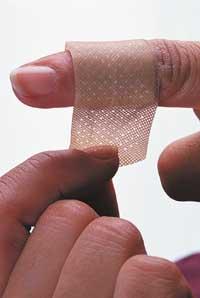Skin breathes
2002/02/13 Galarraga Aiestaran, Ana - Elhuyar Zientzia
Previously it was thought that the cells of the outer layer of the surface could capture oxygen by air. Now, researchers at Ruhr University in Germany have shown that the skin layer that rust from the air is ten times thicker than expected. In fact, the oxygen from the air reaches the cells located at 0.25-0.4 mm, that is, the entire epidermis, and a part of the dermis with roots and glands of the hairs.
To measure skin respiration, a small part of the skin was coated with an oxygen-sensitive membrane. This has prevented the hard methods used previously, such as putting the entire leg in a gas chamber or putting electrodes on the surface.

Research is of great importance for understanding and treating skin diseases. Many skin diseases are due to the lack of oxygen from skin cells. For example, doctors considered that skin ulcers typical of old age were due to the difficulty of oxygen in the blood to reach it. But if the skin takes oxygen from the air, the cause is not just the lack of oxygen.
According to researchers, surface damage occurs when the balance between blood and air inputs is broken. Therefore, it is not advisable to cover the ulcer with salt, since the oxygen supply is further reduced.
On the contrary, in diseases in which the proliferation of skin cells is excessive, such as psoriasis or eczema, the coating of the skin is usually beneficial. According to this study, the explanation is simple: if you avoid the arrival of oxygen to the cells, they cannot multiply so easily. It seems that healthy skin is able to compensate for this lack of oxygen with the acquired blood, but the patient does not have that capacity.
However, only 0.4% of body oxygen needs are covered by skin breathing. Therefore, even though the oxygen supply on the surface is totally impeded, the oxygen level in the body does not decrease.
More information: Nature magazine website

Gai honi buruzko eduki gehiago
Elhuyarrek garatutako teknologia






